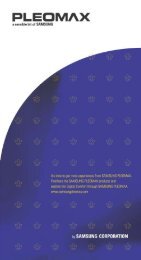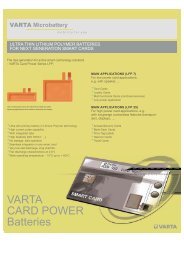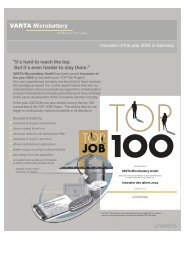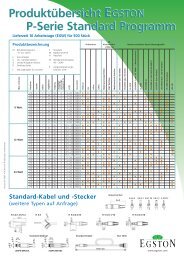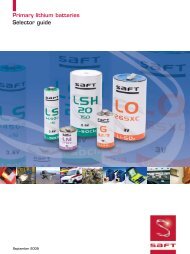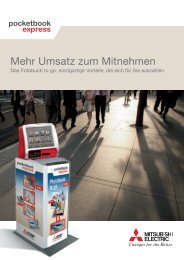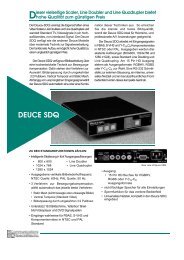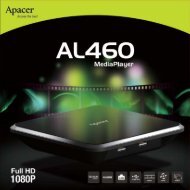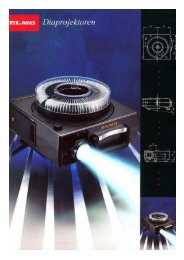BATTERY CHARGERS DIAGNOSTIC TOOLS BATTERY TESTERS
BATTERY CHARGERS DIAGNOSTIC TOOLS BATTERY TESTERS
BATTERY CHARGERS DIAGNOSTIC TOOLS BATTERY TESTERS
You also want an ePaper? Increase the reach of your titles
YUMPU automatically turns print PDFs into web optimized ePapers that Google loves.
<strong>BATTERY</strong> <strong>CHARGERS</strong> - <strong>TESTERS</strong> - <strong>DIAGNOSTIC</strong> <strong>TOOLS</strong><br />
General battery charging facts<br />
What is CCA? - Cold Cranking Amps is a rating used in the battery industry to defi ne a battery’s ability to start an engine<br />
in cold temperatures. The rating is the number of amps a new, fully charged battery can deliver at 0°F / -18°C for 30<br />
seconds, while maintaining a voltage of at least 7.2 volts, for a 12 volt battery. The higher the CCA rating, the greater the<br />
starting power of the battery. The higher the temperature the higher the CCA capability of the battery, conversely the lower<br />
the temperature the less CCA it can deliver. This is why batteries with higher CCA ratings are in demand in cold climates.<br />
Amp Hour Rating - An Amp hour is defi ned as the number of hours a new, fully charged battery is able to deliver a fi xed<br />
current down to a battery voltage of 10.5 volts. Powersport batteries have a 10 hour rating which means, the Amp hour is<br />
rated according to the fi xed current drawn in 10 hours to a voltage of 10.5V. Automotive & marine usually have a 20 hour<br />
rating.<br />
SLI - Description applied to batteries used for Starting, Lighting & Ignition.<br />
AGM - Absorbed Glass Mat - All Yuasa YTX & YTZ, GS GTX, Odyssey DryCell, East Penn (Harley) batteries are of this<br />
type. It means that no liquid electrolyte is present as it has all been absorbed into the fi breglass mats that are fi tted<br />
between & are in contact with the lead plates. Mounting position is usually relatively upright, but the technology allows it<br />
to be positioned on it’s side or permanently tilted up to a 90 degree angle.<br />
MF - A term used by Yuasa to indentify their powersport AGM battery range (YTX & YTZ types). The maintenance free<br />
term refers to electrolyte maintenance only. There are many companies that manufacture identical copies of Yuasa<br />
batteries. Companies that are licenced to use this symbol will display it on their batteries.<br />
Not to be confused with Maintenance Free explanation below. *<br />
VRLA - Valve Regulating Lead-Acid battery - A sealed battery that has release valves for excess pressure created by<br />
over charging. All sealed batteries have pressure regulating valves, but the type of battery referred to here usually has<br />
electrolyte in liquid form. Mounting position is upright.<br />
GEL - A sealed battery which has electrolyte in GEL form. The electrolyte remains between & in contact with the plates<br />
and the slow fl ow rate of GEL allows the battery to be tilted. Mounting position is usually upright or close to vertical.<br />
* Maintenance Free Batteries - Do not exist in rechargeable form. The only maintenance free battery is a disposable<br />
battery. Any battery that requires recharging and / or maintenance charging during storage cannot be termed as maintenance<br />
free. The maintenance free term refers to electrolyte maintenance only. Once electrolyte is added to a ‘sealed’<br />
battery and the caps are fi tted at the factory or by the dealer (in case of batteries that are delivered with acid packs), no<br />
further electrolyte maintenance is required.<br />
1 : Can the vehicle’s charging system recharge a deeply discharged battery after jump starting?<br />
A vehicle’s charging system has been designed to supply power to the electrical system at a voltage not exceeding<br />
14.5V, very much like a standard battery charger. For this reason a vehicle’s charging system cannot deliver suffi cient<br />
charge to effectively reverse sulfation, even if the battery is only partially sulfated. It is likely that a battery is always going to<br />
present starting problems and it will be doomed to a short life if not properly desulfted and fully recharged.<br />
2 : The larger the battery the higher the current rating of the charger to correctly maintain the battery.<br />
To maintain a battery without causing damage or loss of electrolyte, voltage is the critical factor, not current. Once<br />
the battery is fully charged it requires a few milli-amps to overcome its own resistance (which causes self-discharge).<br />
Connected devices such as an alarm, trip computer etc. may add to the current draw, but it should still remain in the low<br />
milli-amp range.<br />
3 : Any “maintenance” charger will do; they all maintain batteries just as well as the next.<br />
First this fact: A battery receiving a maintenance voltage lower than recommended will suffer low level sulfation build up<br />
over a period of time that will result in a shorter service life.<br />
There are a number of smart chargers on the market with a controlled maintenance mode. Many automatic smart<br />
chargers, especially those designed long before AGM batteries became popular, are set not to overcharge fi ller cap / wet<br />
cell batteries that require a lower maintenance charge voltage setting than AGM. That is why standard smart chargers<br />
manufacturers tend to set maintenance voltage at 13,2V.<br />
Per the manufacturer specifi cations of sealed AGM batteries (including MF motorcycle type) the minimum maintenance<br />
voltage is13,5V to keep an AGM battery at 100% charge. All TecMate chargers are set to correctly maintain AGM and<br />
fi ller cap batteries.<br />
4 : Just add the acid to a new battery and it is ready to go !<br />
NOT A GOOD IDEA. Such a battery will only ever deliver 70 to 80% of its capacity which is fi ne initially, but soon after<br />
(within months) you will experience starting problems and the battery will fail sooner than expected.<br />
T: 905 337 2095 F: 905 337 3962 sales@tecmate.com<br />
9




